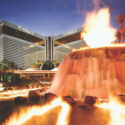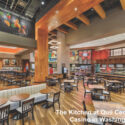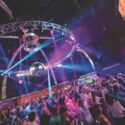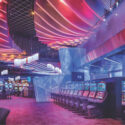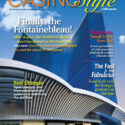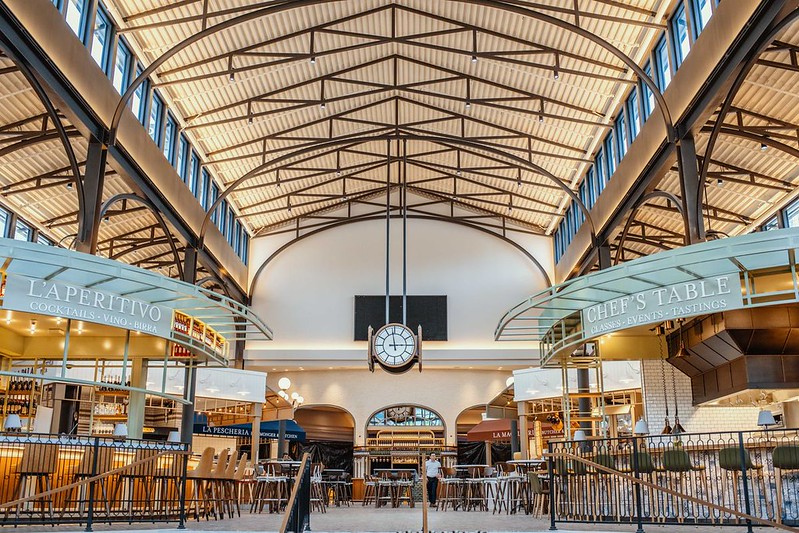
Food and beverage trends come and go, influenced by market conditions, labor, food costs or hopefully the desire to be unique and different.
Las Vegas once defined dining trends and food programs; there was no hotter market. Restaurant design, ultra lounges and menus were all redefined and changed the way we ate across the globe. Las Vegas influenced the world. Our current trends are not as ambitious, but they’re still relevant.
Fast Casual Everything
The labor market influences dining more than any other factor today. Labor shortages and union costs both affect how food is cooked and presented. Fortunately this has brought us the food hall, which is far preferable to the food court that existed for so many decades.
Food halls can take on the look of fresh markets, food trucks or mini-restaurants that bring the cooking out front to the people, with ingredients prepared in a healthy manner right before your eyes, cooked to order. These areas tend to be very active and exciting—think Block 16 at the Cosmopolitan of Las Vegas or Eataly (above) in New York. They are totally visually stimulating—you want to be there and be part of the excitement. They don’t come off as low-cost dining options, but feel much more upscale and appealing.
Localized upscale food trucks have taught people that great food can come from little places, and that’s translated well to the food halls. Exciting food served in exciting environments! It’s a win for everyone.
The Hidden Restaurant
Beauty and Essex at the Cosmopolitan as well as Greene St. Kitchen at the Palms are great examples of the “hidden restaurant.” Beauty and Essex is concealed behind an anonymous back door in a pawn shop, while Greene St. is accessed through a graffiti-decorated arcade. They both set the mood that you’re about to enter a new and different dining experience.
The design and concept carry through to the dining rooms, so you get caught up in the experience. What would it be like to dine in a former pawn shop? Or an arcade from yesteryear that a graffiti artist friend helped to redecorate? These are fun and unexpected ways to dine. The concepts can skew either high-end or more approachable.
These offerings also give marketing departments great opportunities, since they aren’t your typical dining establishments. Because they’re somewhat hidden, the message needs to get out. Otherwise you’ll never find them, and miss out on a special evening.
Dinner and a Show
Once again, we’ll mention the highly influential Cosmopolitan, which is often on the cutting edge of trends. Rose. Rabbit. Lie. is a great example of an experiential supper club that perfectly balances entertainment and dining. The food is great, and everyone walks away entertained and feeling good about the evening.
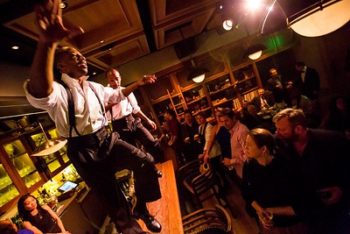
Rose. Rabbit. Lie. is an experiential supper club that combines entertainment with great food
A new supper club will open at the Bellagio shortly, called the Mayfair. Supper-club entertainment can vary, including tableside magicians, trapeze artists, dance vignettes and acrobats. The activities can take place in cages, overhead or built into the wall; the key is to have multiple focal points scattered about the dining room. It’s great fun for couples and larger groups, and really makes for a more open and social dinner.
The design of such interiors can be moody, with purple lighting and misting smoke, or more upscale and traditional like the Rabbit. At times the show events change the room’s appearance and everyone is expected to stop and watch. Other times, they’re just background visuals. A DJ usually accompanies the effects and helps the evening flow with highs and lows of energy.
Another Local Restaurant in Vegas
The new trend is to take a restaurant with a good reputation in the hometown you live in, put it in the Xerox machine, blow it up and out, and put it on the Las Vegas Strip. Why? I don’t know. Why would I hop on a plane and go to the same restaurant 10 minutes from my home?
There was a time when the industry would invent new menus, beverages and experiences. Then, as designers we’d be challenged to create spaces that were new and original. Fix, Aqua and many others turned the design world upside down. New materials, detailed ceilings and open facades challenged designers and paved the way for us to think differently and to push the boundaries.
Those were the days that Las Vegas and Dubai would compete for the cover of design magazines each month. Proudly, most months Las Vegas graced the covers with the most beautiful spaces ever designed. Money was no object—the only thing that counted was giving the customer an incredible memory to take home and carry them over until their next trip back.
Everything Small Is Big Again!
Small-format restaurants are a big hit and offer guests greater variety and experiences. Wynn and Galaxy in Macau both do this very successfully. Ramen bars for 12, yakatori for 20 and a small French cafe for 45 people are the norms. Galaxy has more than 85 restaurants and bars, and most have fewer than 75 seats.
The lines are long, but the food and designs are worth the wait. In such small spaces design can let loose. You can spend a week there and never eat your way through the property’s restaurants. Some are focused on female retail shoppers, others on bridal parties only, with all the flowers made of delicious sweets. Such focused food and design can really make guests feel special.
Celebrity Chefs
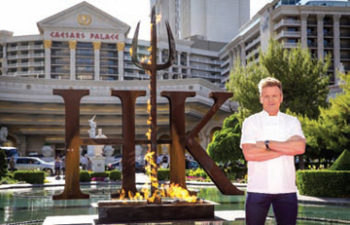
Food superstar Gordon Ramsay recently opened a “Hell’s Kitchen” experience at Caesars Palace
It’s a trend that’s been around for a while and just won’t die: the celebrity chef. As long as you have Facebook, you can brag to your friends how much better your life is than theirs because you’re at a certain restaurant. It’s too bad the designs aren’t as nice as they used to be in those chef-driven restaurants. So live in the moment, not online. The food is better.
Our challenge is to set the trends, not follow them. We must challenge ourselves to strive for the new and different. Push the boundaries. Focus on the guests. Exceed their expectations. If we make them dream about their next trip to Las Vegas, we’ll always be relevant and desirable.



